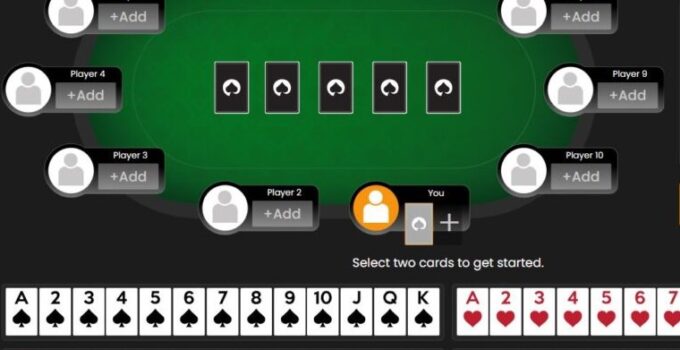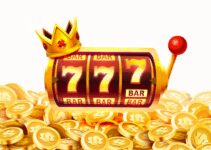Knowing your poker odds separates casual players from strategic thinkers. It’s not enough to play hands based on gut feeling or instinct. Odds give you real control. You don’t need to be a math genius. You just need to understand what matters and how to apply it fast at the table. This guide will break it all down in clear terms—no confusing math lessons, just what you need to calculate your chances and make better decisions.
What Are Poker Odds?
Poker odds tell you how likely it is that you’ll win a hand. They measure the relationship between your chances of hitting a better hand and the cost of continuing. You need this information to avoid calling bets you shouldn’t or missing chances to raise when your odds are strong.
At their core, poker odds rely on two things:
- Outs — Cards that will improve your hand.
- Probability — The likelihood that those outs will appear by the river.
You use poker odds to make rational, profitable choices—especially in games like Texas Hold’em. The better you understand them, the more confident and consistent your decisions will become.
How to Calculate Outs
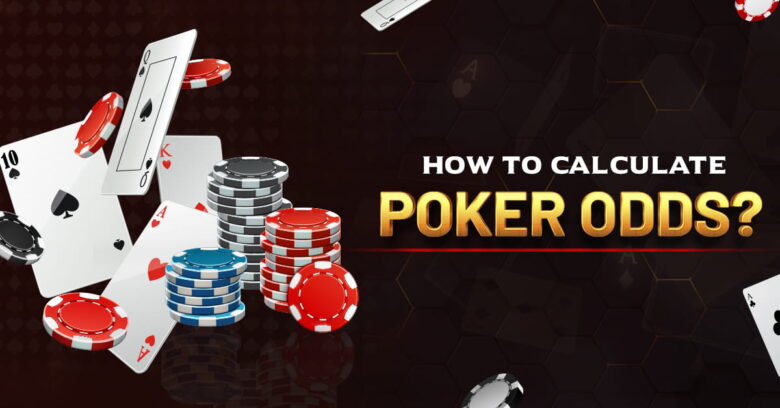
Source:pinterest.com
Let’s say you hold a flush draw on the flop. You have two hearts in your hand, and two more show on the board. That means you’re chasing one more heart to make a flush.
There are 13 cards of each suit in a deck. You’ve seen four hearts, so there are 9 outs remaining. That’s your key number.
Now, you need to convert those outs into odds. That’s where the Rule of 2 and 4 comes in handy.
- After the flop: Multiply your outs by 4 to get the approximate % chance of hitting your hand by the river.
- After the turn: Multiply your outs by 2 to get the % chance of hitting on the river alone.
So with 9 outs after the flop, 9 × 4 = 36%. That’s your estimated chance of making your flush.
Keep in mind: This isn’t precise math, but it’s close enough during a hand when you have seconds to decide.
What About Pot Odds?
This is where things get strategic.
Pot odds compare the size of the current pot to the size of the bet you need to call. If the odds of completing your hand are better than the pot odds, then calling is statistically profitable.
Example:
- Pot: $100
- Opponent bets $25
- You need to call $25 to stay in the hand
The pot will be $125 if you call. That’s a 5:1 payout.
Now, go back to your outs and the Rule of 2 and 4. If your chance of hitting the winning card is better than 1 in 5, the call makes sense.
Most skilled players use these odds to guide decisions, especially in marginal situations. This is where precision gives you a real edge.
Playing Online? Trust Matters
Online platforms can offer the same level of competitiveness and excitement as live tables, but not all are equal.
You need to focus on more than just interface and features. The safety of your money, speed of payouts, and quality of opponents all matter. That’s why experienced players turn to pokermira—a secure and reputable choice among the world’s best online casinos. You can sharpen your skills in a safe environment that values fair play and smooth financial transactions.
Whether you’re just learning how to track odds or already calculating them in real time, a trusted platform makes a difference.
How Implied Odds Influence Your Moves
Implied odds factor in the money you expect to win if you hit your hand—not just what’s in the pot now. They help you stay in a hand that may not offer good pot odds in the moment but could pay off big later.
Let’s say you’re chasing a straight. Your pot odds don’t justify a call. But your opponent is aggressive and might bet again if you hit. That future value makes the call profitable.
You can’t quantify implied odds as easily. You need to rely on pattern recognition and your read on the opponent. It’s a mix of math and psychology.
Reverse Implied Odds – When to Be Cautious
Reverse implied odds show how much you could lose even if you hit your hand. Imagine chasing a flush, but your opponent might already have a higher flush draw. You hit your card, commit chips—and still lose.
Smart players avoid these traps. They ask:
- What’s the best hand I can realistically make?
- Could someone else be holding a better version?
Avoid calling in situations where your hand is strong but not unbeatable. Poker punishes blind optimism.
Common Mistakes When Calculating Odds
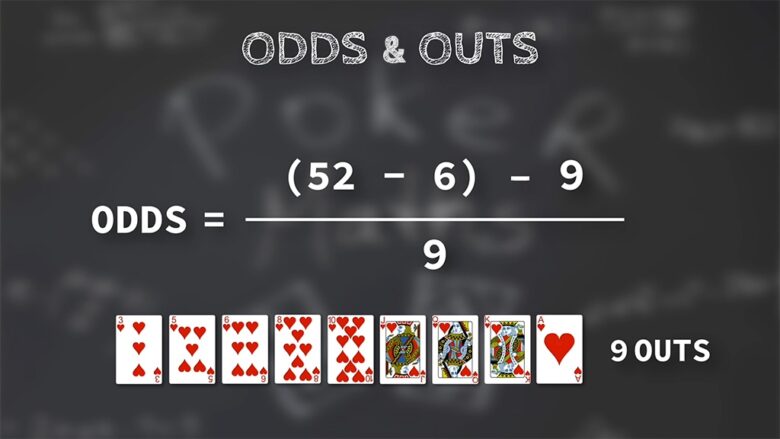
Source: math4all.es
You don’t need to be perfect. But repeated mistakes cost money. Watch out for these:
- Counting outs that aren’t real: Don’t include cards that might give someone else a better hand.
- Ignoring reverse implied odds: Just because you can hit a hand doesn’t mean you should.
- Forgetting position: Odds matter less if you’re out of position and acting blind.
- Not adjusting to opponents: Likelihood of something happening means nothing if you ignore how aggressive or tight others play.
Odds help you play your best game, but only if you apply them to real-world behavior.
Quick Poker Odds Cheat Sheet
Want a fast reference? Memorize these common odds and outs.
| Draw Type | Outs | Chance on Turn + River (approx) |
| Inside Straight | 4 | 16% |
| Open-Ended Straight | 8 | 32% |
| Flush Draw | 9 | 36% |
| Two Overcards | 6 | 24% |
| Full House (with trips) | 6 | 24% |
These numbers come from multiplying outs by 4 after the flop. Keep them in your head. You’ll make faster, smarter decisions in every session.
Should You Bluff Based on Odds?
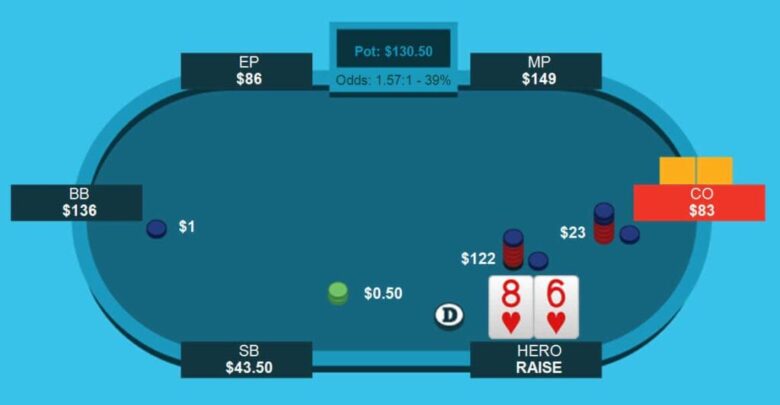
Source:pinterest.com
Not always. Odds tell you the math behind a decision. Bluffing plays off psychology. If you’re going to bluff, understand:
- What range your opponent puts you on
- How your board looks to others
- Whether your story makes sense
Bluffing with zero outs means you’ve given up on math. Use it carefully.
Final Takeaway
Once you get used to calculating, your whole game changes. You stop chasing hopeless hands. You start raising when the math is on your side. You fold when others cling to hope. That’s the power of understanding odds.
Stick with it. Practice at real tables. Over time, you’ll play with more discipline and more control.
Odds don’t guarantee a win. But they remove guesswork. And that’s how smart players stay profitable in the long run.

